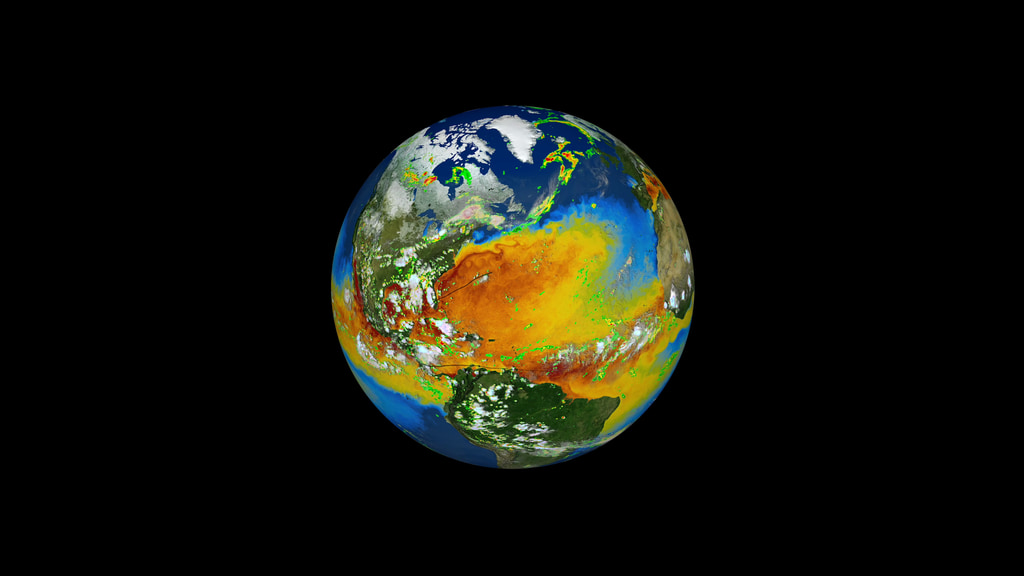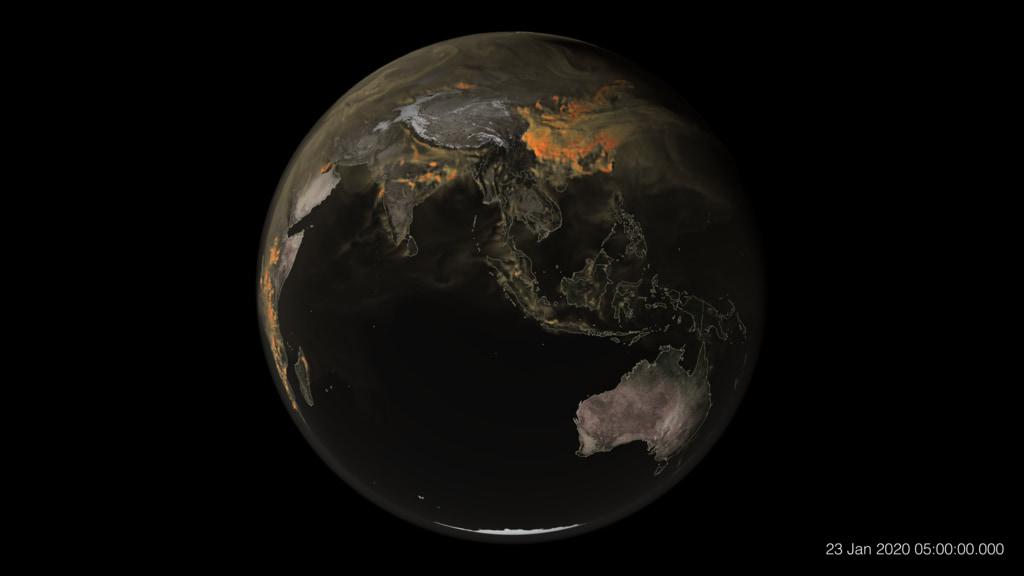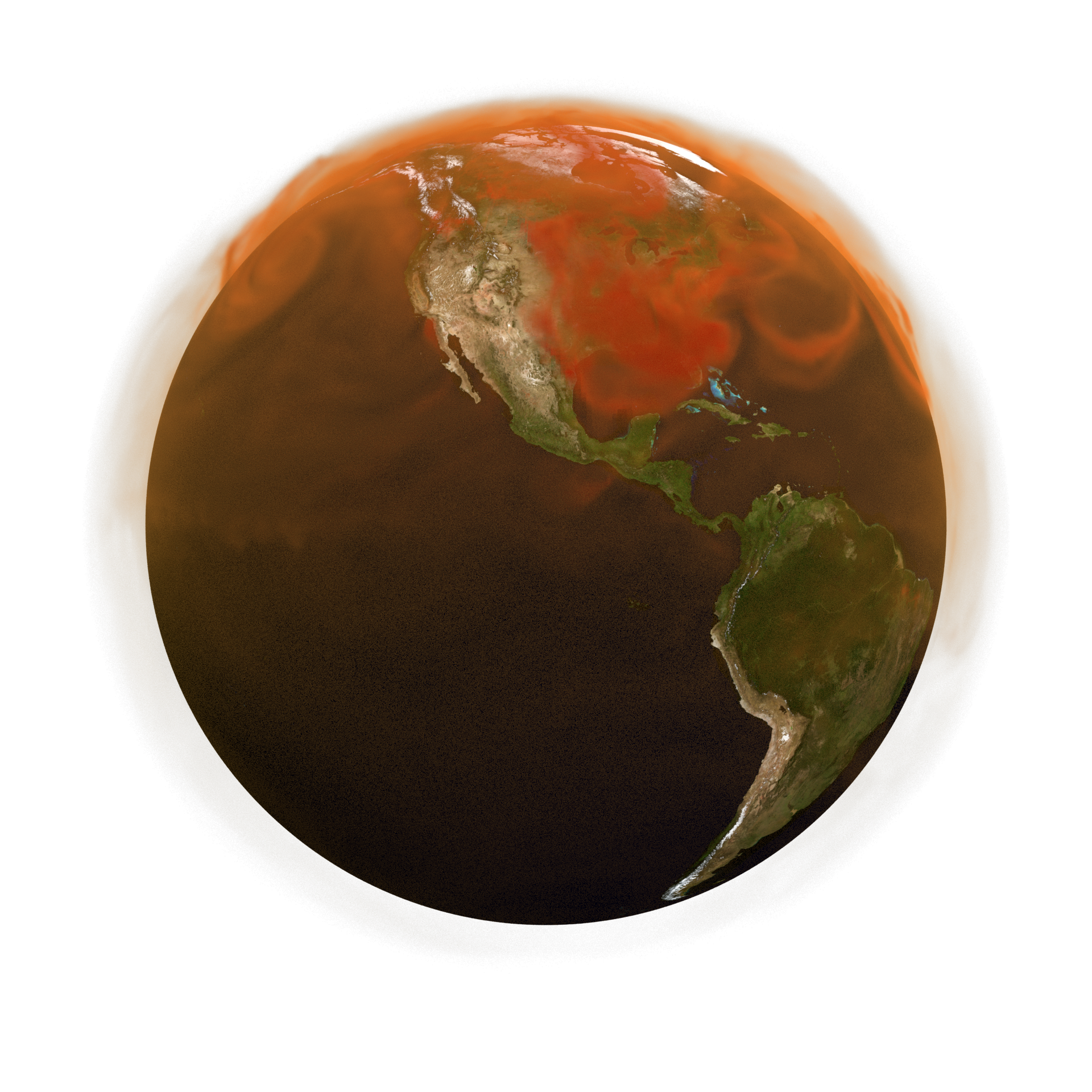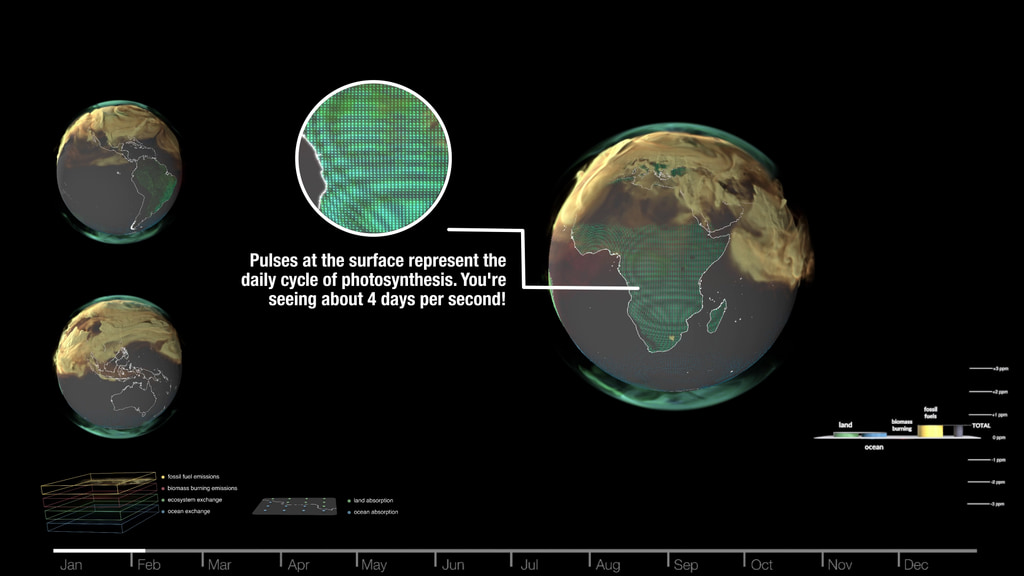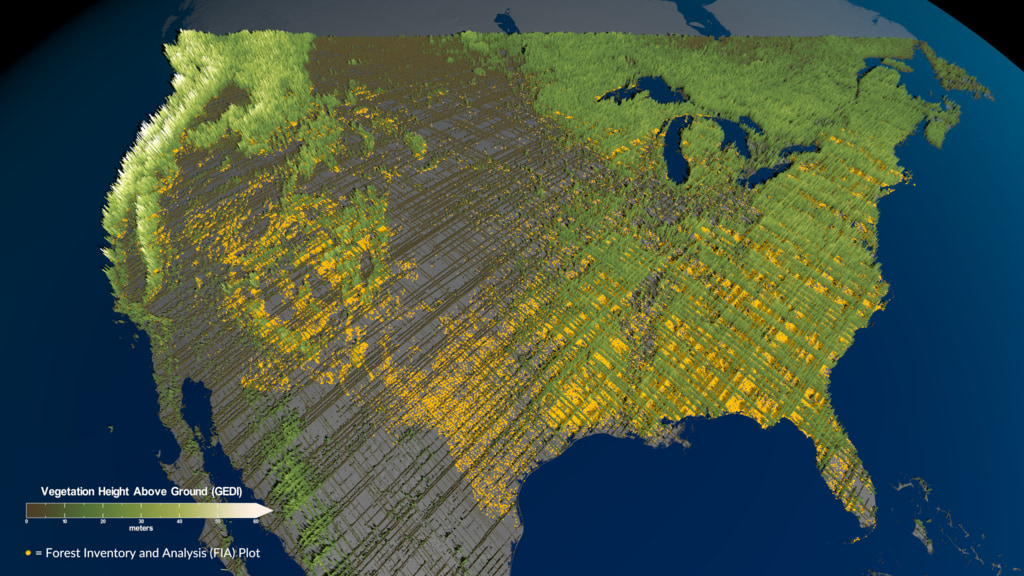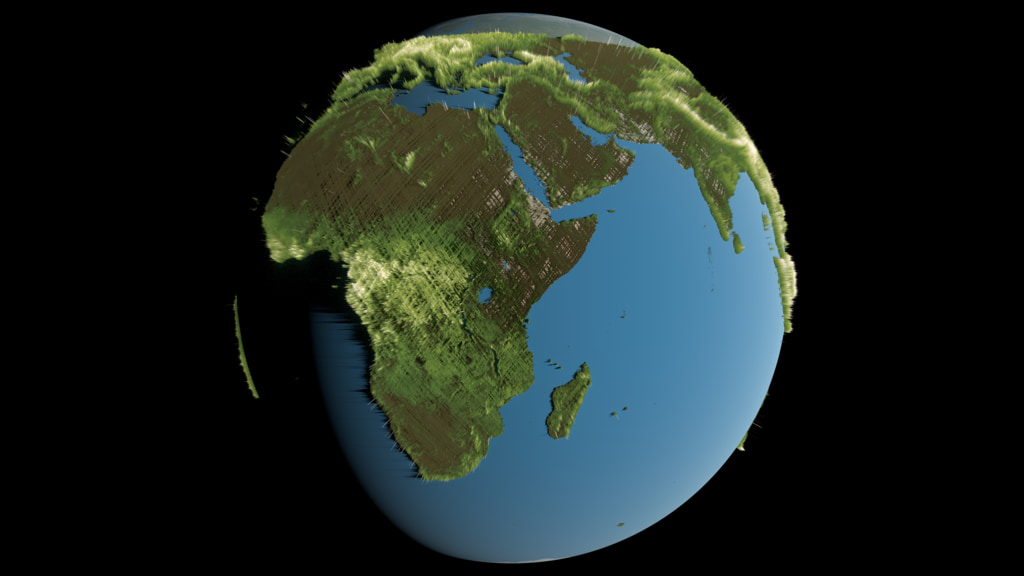NASA + Smithsonian and Greenhouse Gases
Full 8K resolution. Optimized for Earth Information Center display at the National Museum of Natural History (Smithsonian).
Universal Production Music France: "Human Endeavor" by Oliver Grim, Koka Media; "Accuracy" by Laurent Levesque.
Universal Production Music: "Feelings of Pride" by Kathryn Louise Maclennan, Label-Aurora Production Music.
This video can be freely shared and downloaded. While the video in its entirety can be shared without permission, some individual imagery provided by Pond5, Shutterstock and Smithsonian is obtained through permission and may not be excised or remixed in other products. For more information on NASA’s media guidelines, visit https://www.nasa.gov/multimedia/guidelines/index.html
Complete transcript available.
Watch this video on the NASA Scientific Visualization Studio YouTube channel.
NASA uses airborne and satellite data to look at how changes to forests impact carbon dioxide concentrations in the atmosphere. Smithsonian’s GEO-TREES initiative validates satellite observations with ground-based measurements of how much carbon is stored in forests’ trees and vegetation. GEO-TREES also works to bolster global investments in forest protection and restoration. Tracking carbon dioxide, and other greenhouse gases, and having a comprehensive understanding of how much carbon is stored in our planet’s diverse forests are both critical to monitoring our changing climate and its impacts.
About GEO-TREES
The GEO-TREES project is hosted at the Smithsonian Tropical Research Institute and relies on the support from and collaboration with network partners, including ForestGEO, FORESTPLOTS.net, TmFO, the Bezos Earth Fund, The Gordon and Betty Moore Foundation, the US National Science Foundation (NSF), the Group on Earth Observations (GEO), the Centre National D’Etudes Spatiales (CNES), France, the Centre National de la Recherche Scientifique (CNRS), France, the University of Leeds, UK, International Institute for Applied Systems Analysis (IASA), Austria, the U.S. National Aeronautics and Space Administration (NASA), OneForest, France, and the European Space Agency (ESA).
For More Information
Credits
Please give credit for this item to:
NASA and Smithsonian
-
Producer
- James Round (NASA/JPL CalTech)
-
Writer
- James Round (NASA/JPL CalTech)
-
Director of photography
- Grace Weikert (eMITS)
-
Videographer
- Ana Endara (Smithsonian Tropical Research Institute)
-
Editor
- James Round (NASA/JPL CalTech)
-
Visualizers
- Helen-Nicole Kostis (USRA)
- Andrew J Christensen (SSAI)
- Kel Elkins (USRA)
- Mark SubbaRao (NASA/GSFC)
-
Scientists
- Stuart Davies (Smithsonian Forest Global Earth Observatory)
- Helene Muller-Landau (Smithsonian Tropical Research Institute)
- Lesley Ott (NASA/GSFC)
- Daniel Zuleta (Smithsonian Forest Global Earth Observatory)
-
Intern
- Luisa Fernanda Gómez (Smithsonian Tropical Research Institute)
-
Technical support
- Brenda Lopez-Silva (SSAI)
- Michael Chyatte (ADNET Systems Inc.)
- Laurence Schuler (ADNET Systems, Inc.)
- Ian Jones (ADNET Systems, Inc.)
-
Support
- Jefferson Beck (eMITS)
- Kathleen Gaeta (Advocates in Manpower Management, Inc.)
- Alex Gurvich (NASA/GSFC)
- Katie Jepson (eMITS)
- Aries Keck (ADNET Systems, Inc.)
- Nicole Ramberg-Pihl (SSAI)
- Christyna Solhan (Smithsonian Institution)
- Eleanor Stokes (NASA)
Release date
This page was originally published on Tuesday, October 8, 2024.
This page was last updated on Wednesday, October 2, 2024 at 1:40 PM EDT.

![Full 8K resolution. Optimized for Earth Information Center display.Music credit: "Magical Moments by Liam Joseph Hennessy [ PRS ]" and “Strategy Meeting by Brice Davoli [ SACEM ]” from Universal Production MusicThis video can be freely shared and downloaded at https://svs.gsfc.nasa.gov/14606. While the video in its entirety can be shared without permission, the music and some individual imagery may have been obtained through permission and may not be excised or remixed in other products. Specific details on such imagery may be found here: https://svs.gsfc.nasa.gov/14606. For more information on NASA’s media guidelines, visit https://nasa.gov/multimedia/guidelines.](/vis/a010000/a014600/a014606/EIC_FIRE_FINALCUT_CENTER_ONLY_7680x2160_30fps_AAC_4800Hz_Stereo_071224_GAW.00110_print.jpg)


